Bobtail dogs: a description of the old English shepherd dogs, the nuances of their content

The description of the Old English Shepherd Dogs - Bobtails - is well known even to those who are far from the world of dog breeding. Fluffy giants with a missing or short docked tail attract attention while walking, are recognized champions of the dog show and easily acquire the status of a pet. The bobtail dog is able to get along with anyone, but its ancestors were excellent shepherds and bravely defended the flock from wolves.
The breed has not lost its intellectual abilities either - its representatives are so smart that they are used as guides for the blind and in the rehabilitation therapy of disabled children.
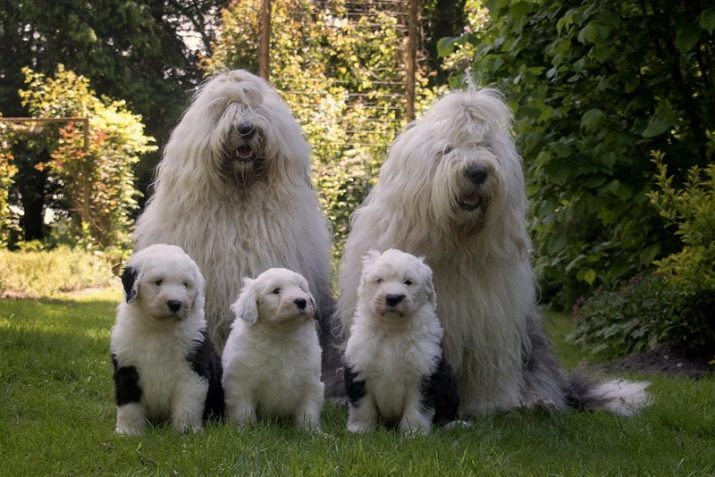
Origin story
The Old English Shepherd Dog is a breed that has more than one century of faithful service to people in its history. There are even suggestions that the ancestors of bobtails came to Great Britain from Ancient Rome, where representatives of the nobility were very partial to such dogs. Possessing a typical herding breed appearance, allowing the dog to get lost among the flocks without the risk of being noticed by a predator, they easily took root in Foggy Albion.
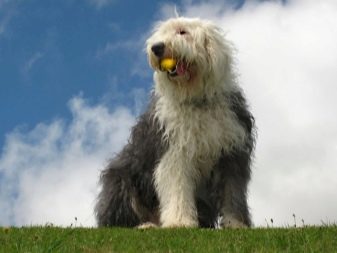
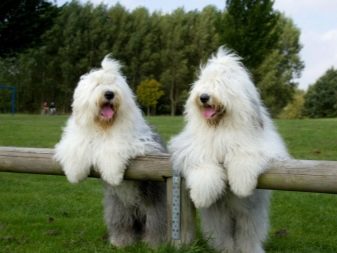
In the British Isles, fluffy, fearless dogs quickly gained popularity among the farming class. Good guards, loyal pets, and excellent shepherds made it easy for employees to graze their livestock and were much cheaper to maintain.The absence of a specific smell emanating from the animal made it possible to quickly accustom the sheep to a new member of the flock, and served as part of a camouflage from predators.
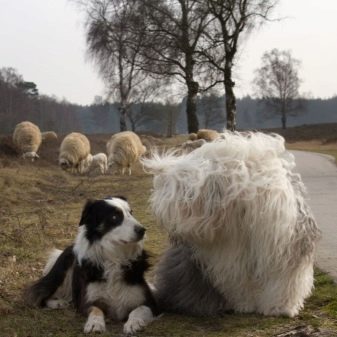
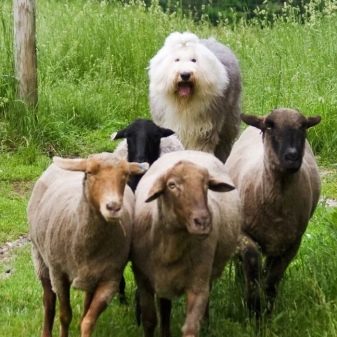
Like many other working breeds, For a long time, the bobtail did not have a pronounced phenotype inherited from generation to generation. But with the blending of the blood of Briards and South Russian Shepherd Dogs, we managed to get stable results. The resulting animals had a large constitution, long hair, and an unusual short tail. Initially, it was not docked, just as a result of crossing, a short-tail mutation appeared.
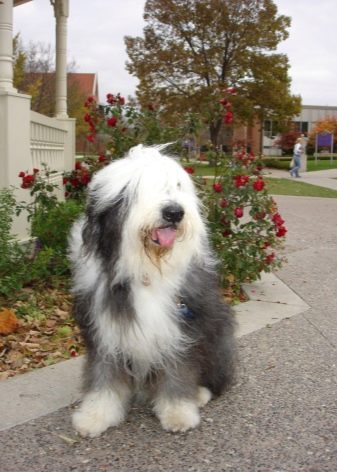
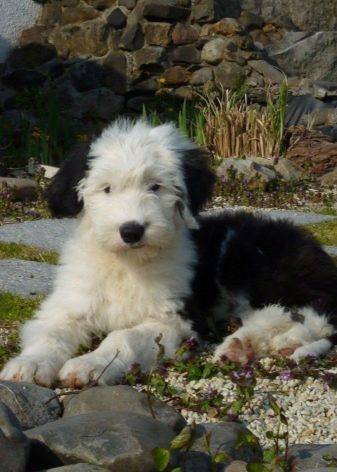
The official name of the breed in Great Britain and today sounds like "Old English Sheepdog". But recognition, despite the centuries-old practice of breeding, she received quite late, being considered insufficiently aristocratic and noble. The world's first dog show featuring bobtails took place in 1864, and the first impressions of the canine community were mixed. But after evaluating the working qualities of the animal, it was nevertheless considered suitable for use in breeding work.
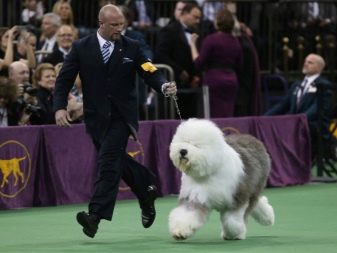
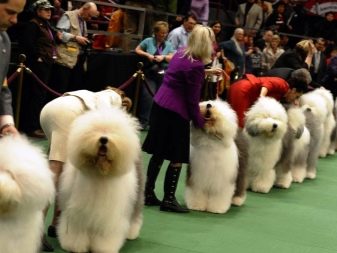
Initially, bobtails were only allowed to perform in specialized shepherd tests. But in the future, breeders have achieved for their pets the right to compete in external attractiveness. The first champions came from the counties of Gloucestershire, Norfolk, Suffolk. A significant contribution to the development and popularization of the breed was made by the gentleman from South England Edward-Kerr, who devoted a significant part of his life to the breeding of the Old English Sheepdog.
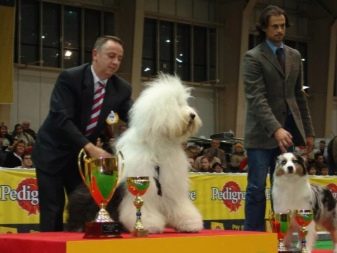
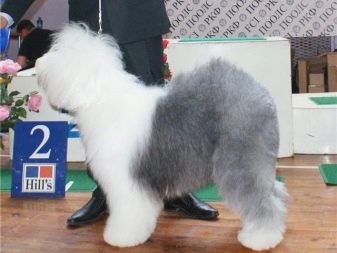
In 1888, the Old English Sheepdog received its official standard, according to which dogs should have a short (no more than 4-5 cm) tail. Many years later, in 1993, the rules for the protection of animal rights changed. The obligatory presence of a short tail has been removed from the text of the breed standard. But in a natural way, both ordinary long-tailed individuals and animals with a shortened or absent process appear in the litters.

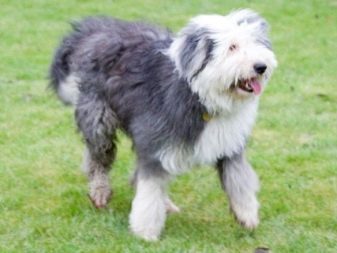
Description
Adorable fluffy giants - representatives of the "Old English Sheepdog" breed - at any age have a touching and cute look. But their puppies always evoke special affection. Kids look adorable, have a contrasting black and white color, brown eyes. The presence of signs of heterochromia is acceptable - in this case, the iris will have brown and blue colors. Pure white and completely blue-eyed dogs are not allowed to breed and participate in exhibitions.
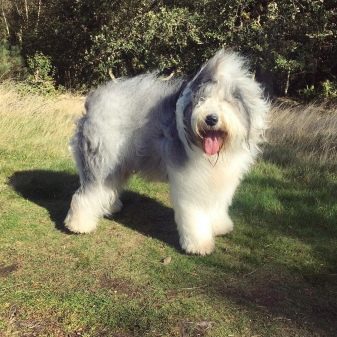

Born tiny, by 2 months puppies gain up to 4.5 kg of weight, and by the year they increase this figure 10 times. By 12 months, the height and body weight of the animal are fully consistent with the proportions of an adult dog.
Muscular, large, proportionally built bobtails are an example of health and vitality. At the withers, the animal reaches 61 cm, the body format is square, the body is folded in proportion. A characteristic breed characteristic is the croup raised above the level of the withers. The limbs are straight, with a well-developed, powerful bone. The tail of the animal can be long from birth, the short shape has an end with a characteristic thickening, like that of a beaver.
The head of the bobtail is large, developed, with pronounced superciliary arches, a wide and long muzzle. Thick, fleshy lips, nose with black lobe. On the sides of the head there are pendant ears of medium size, tightly pressed against the skull. The eyes are dark, widely spaced, not large.
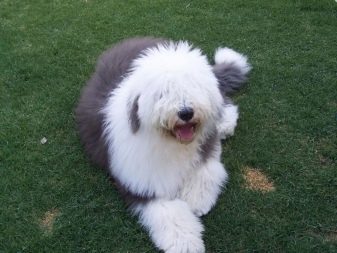
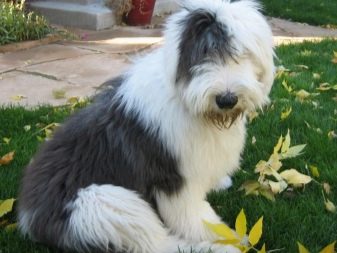
Mestizo bobtails retain the breed characteristics of their parents and most often inherit a lush coat. Often they are passed off as a purebred animal, but with age, differences still make themselves felt. In order not to acquire a hybrid of unknown origin under the guise of a thoroughbred pet, it is worth buying dogs only in officially registered kennels or through clubs. The number of Old English Sheepdogs in Russia is small, and all the producers involved in breeding are well known.
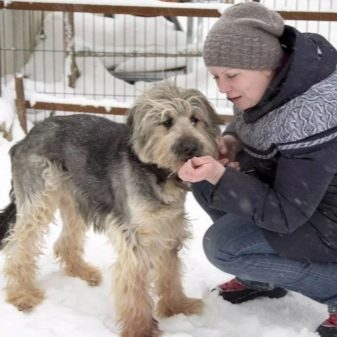
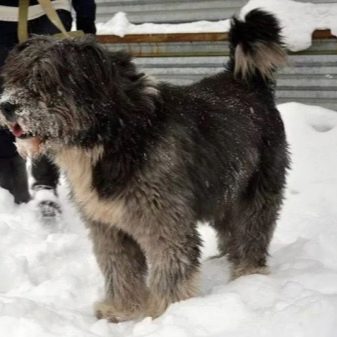
Wool and colors
The body of bobtails is covered with a slightly wavy long guard hair, undercoat is located below, providing additional thermoregulation. The coat is rather coarse, fluffy, not prone to tangling. The color is highlighted by the white color of the chest, head, front legs, abdomen and the background marble, gray, gray-blue complement. The presence of gray on a mostly gray or blue background is called a "grizzly". Blotting of brown, brown spots is excluded.

Black bobtails are called, which have a dark gray color. Puppies are born with a predominantly dark coat. White spots are not allowed on a solid colored background, but contrasting areas on the head, paws, abdomen are quite acceptable.
The Old English Shepherd Dog has a characteristic feature - a gradual change in the color and quality of the guard hair. The final formation occurs only by 4-5 years. The youthful color is silvery-gray, with a slight haze. Adult dogs are always darker. Non-standard color options include merle, brown-white, black and white.

Appearance of puppies
When choosing a purebred pet, it is very important to pay attention to a number of traits that an Old English Shepherd puppy should have. These include:
- black and white coat color (white and blue puppy color is considered a breeding marriage);
- carbon pigmentation of the nose, small pink spots are acceptable;
- scissor bite;
- hanging ears, not too high on the sides of the head.

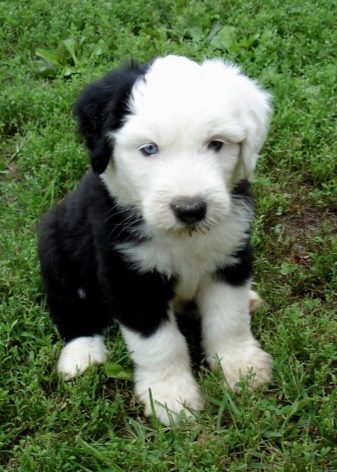
The puppy must meet its age standards, have sufficient fatness, and not show signs of rickets of the extremities.
Character
Bobtails today are ideal companions, capable of still demonstrating excellent working skills. In the absence of a flock of sheep, they are equally enthusiastic about trying to bring the whole family together. The cheerful nature of the puppies attracts the attention of breeders and amateurs to them. They are always in touch, appreciate the company of the owner and need a high level of physical activity. These are classic fidgets with which you need to always be on the lookout: keep wiring and slippers away, do not leave important documents within free access.
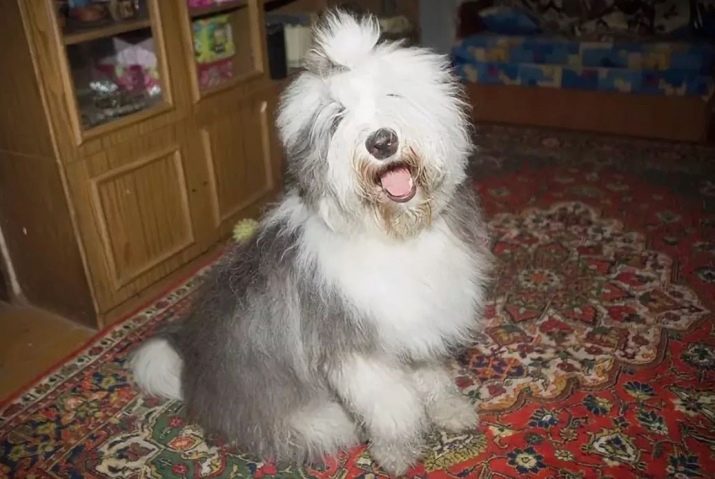
An adult bobtail, especially one living in a house, retains its ability to transform into a cheerful hurricane, sweeping away everything in its path. Moreover, the pet often forgets about the considerable dimensions and frolics like a puppy. You can take a break from the society of the Old English Shepherd Dog only by getting it pretty tired. That is why the breed is often recommended for children or people who are passionate about sports and travel.
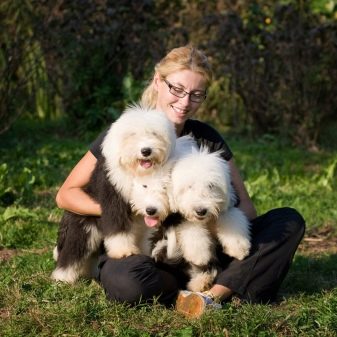
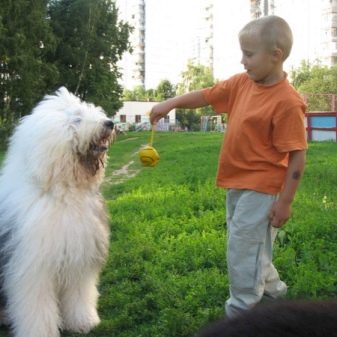
The more time the dog spends with the owner outside the house, the less difficulty there will be with its activity the rest of the time.
Bobtails are often called "nannies" - the need to patronize in their blood. With such a reliable guard, you can leave even a toddler who has just learned to walk for a minute. And with older children, he is indispensable for a walk - both as a companion for games, and as a companion that can protect you from danger. No aggression - just endless patience and love for people. In general, observing the Old English Shepherd, one can conclude that she is not too keen on the company of her relatives - communication with the owner clearly gives the dog more pleasure.

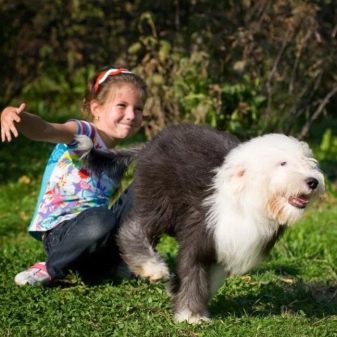
The Bobtail is not the most silent of all English dog breeds. His loud barking is heard everywhere, and if the pet turns out to be "talkative" enough, it will take a long time to wean him from the bad habit. A dog well-bred since childhood does not cause trouble for the owner, but it is worth considering that these animals do not like to be alone. In communicating and playing with other dogs, the Old English Shepherd Dog demonstrates miracles of sociability.
She does not fight for territory, avoids fights and is generally very loyal to all representatives of the animal world. On the walking ground, such a pet will be a ringleader, and natural intelligence will allow him to easily emerge as the winner in speed and agility competitions.

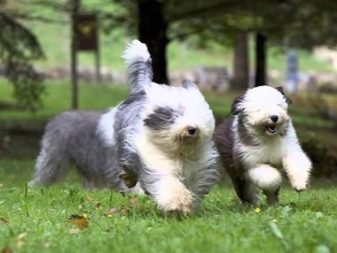
Life span
With the growing popularity of bobtails, more and more often the question began to arise: how many years do they live? Since the Old English Sheepdog is a fairly large dog, its lifespan is not too long. On average, fluffy giants live 10-11 years old, maintaining the natural cheerfulness of character and physical activity for a long time. But the breed has a number of diseases that can shorten the pet's eyelid. First of all, bobtails, like other dogs that are characterized by rapid growth in adolescence, are faced with the problem of dysplasia.
Also, the breed is susceptible to the development of bone cancer. Dogs are also prone to allergies, eczema, dermatitis - this aspect of their life needs to be given special attention. Like other animals with a large area of white hair on their bodies, they are prone to deafness.
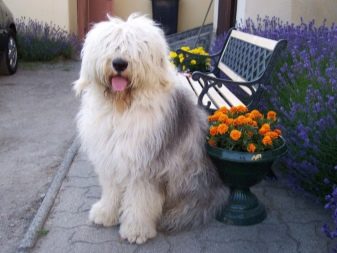
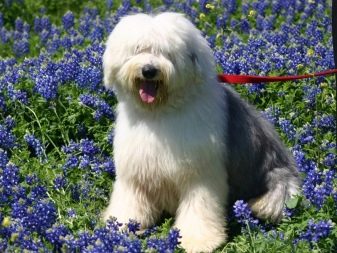
The lifespan of bobtails is highly dependent on diet and level of physical activity. Despite the fact that these dogs cannot be called gluttons, obesity is extremely dangerous for their health. Dogs often have diabetes, heart disease. Regular veterinary examinations will help to identify them in time and begin treatment.
What to feed?
Bobtail food should be varied and balanced. The best choice would be premium dry food or holistic for giant breed dogs. Options for ready-made rations from German manufacturers are suitable – Bosch, Belcando Dog Food, American Innova EVO, British Arden Grande. In the composition of their products, there are no cheap additives and by-products that pose a danger to the animal.
Bobtails consume food quite moderately. Adult dogs eat twice a day, puppies up to six months - 6 times a day. It is better to transfer juniors to special feeds - they contain substances that help to replenish the dog's energy reserves, and provide opportunities for maintaining excellent health for a lifetime.
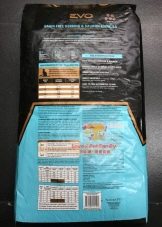
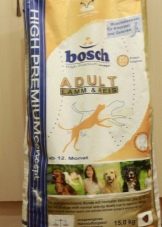

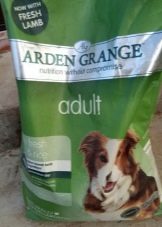
Elderly Old English Shepherd Dogs should also be fed a ready-made, balanced diet that takes into account the needs of animals of this age group.
When eating natural foods, the diet is built from certain foods. Here is a list of them.
- Fresh vegetables contain a large amount of fiber. Coarse fibers help food to be digested properly, normalize the digestive tract.
- Raw lean meat contains essential protein. Beef, veal, chicken, turkey are perfect as a basis for the diet. An adult dog needs about 0.5 kg of fillets daily. One day a week, meat is replaced with boneless ocean fish fillets in a volume of about 1 kg. Puppies are given boiled meat. Add cottage cheese, eggs, kefir to the diet. Up to six months of baby bobtails can be fed with milk, for the correct formation of the skeleton.
- Carbohydrates are also needed. These include cereals: rice, buckwheat, corn, rolled oats, cooked in milk (for puppies) or meat broth. Sweet vegetables are added to them - zucchini, tomatoes, pumpkin, beets.
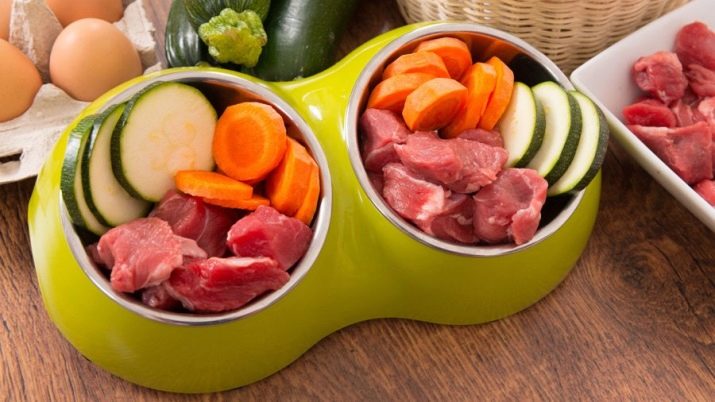
Whether with a fully prepared diet or with natural feeding, bobtails must be provided with constant access to water.
Care rules
The best option for keeping a bobtail is a spacious house with its own yard, where the dog can play properly. When living in an apartment, the animal will need at least two walks. The need for activity in domestic bobtails is not very high. - the duration of the walk in 40-60 minutes will be quite enough... At home, the dog's place should be in the area of human presence. She needs to be able to approach the owner, to be with him.
When arranging a couch, you should avoid overly soft bedding. It is better to choose bowls for food and water of a bobtail on a high stand.
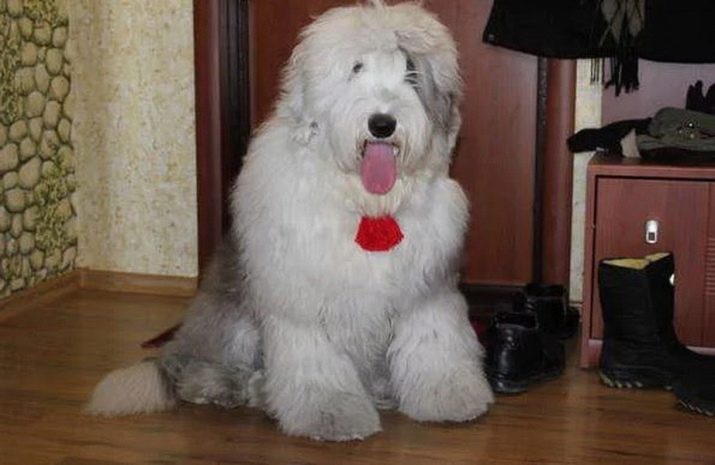
Hair care
The thick and lush coat of a bobtail requires some care, especially when it comes to a show class dog. Full combing is required for an adult pet 2-3 times a month. Only this frequency allows you to avoid the formation of tangles, into which the matted wool turns. Show animals must maintain a certain coat length monthly with the help of a professional groomer.
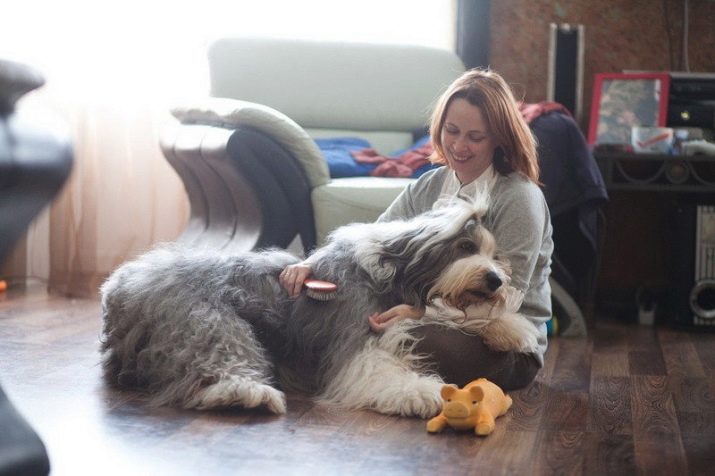
Domestic dogs can be cut short enough in the summer to facilitate their thermoregulation.
It is necessary to accustom the bobtail to regular grooming even as a puppy. The baby's undercoat is too soft and gentle, it must be combed out very carefully and delicately. This approach will allow in the future to avoid the negative reaction of an adult dog to manipulations with wool. At first, brushing should be done short-term, then you can gradually increase the time spent on grooming. To remove excess undercoat, a special massage brush or a flat comb with elongated sparse teeth is used.
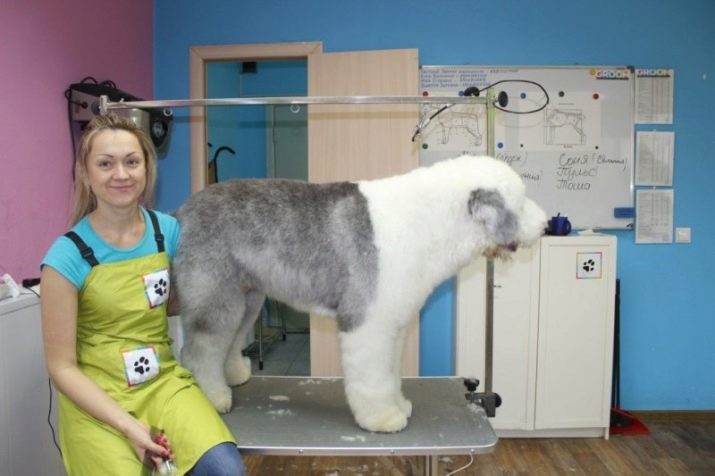
Hygiene procedures
Bathing is required for bobtails about once a season. In summer, additional water procedures are available. When washing, you should use specialized products that do not wash off natural lanolin from the coat. Frequent washing will only cause the soft coat, devoid of its natural lubrication, to start tangling. In winter, the dog cleans its coat on its own, rolling in the snow.
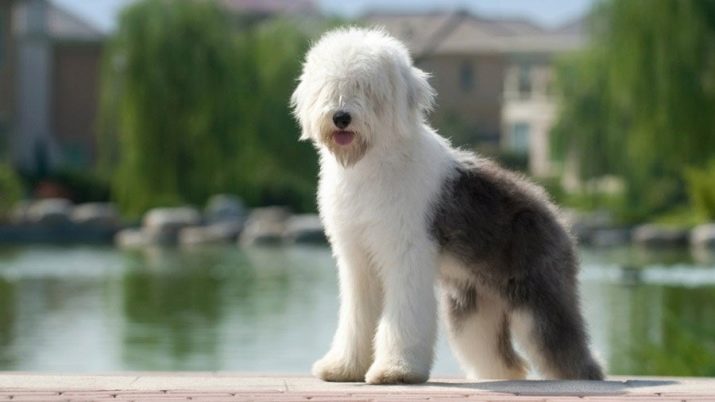
During the combing of the dog, the ears are regularly examined. Hair grows in the ears and must be trimmed. After removing the excess cover, be sure to wipe the skin with a cotton swab with warm water or an antiseptic.
The appearance of a dark plaque, discharge with an unpleasant odor, itching are the reason for contacting a veterinarian. Bobtail nails are usually grinded naturally. But if they are not short enough, pruning is done monthly. Every day, eyes are wiped with a cotton swab dipped in chamomile broth or tea leaves.
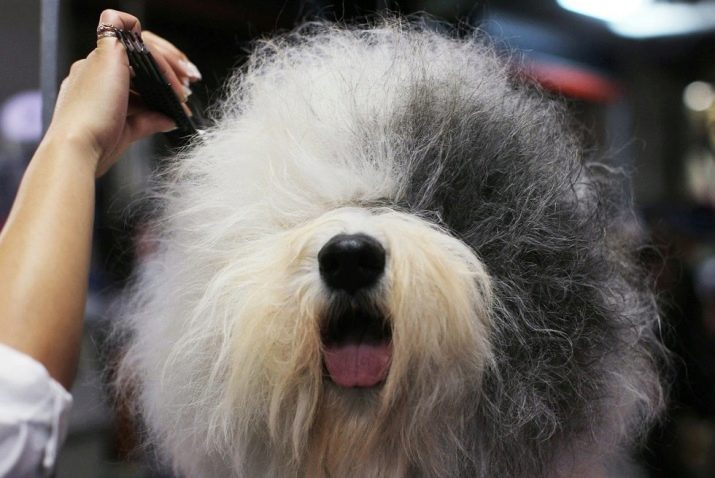
Upbringing
Bobtails are growing rapidly - in a short time a puppy weighing 6 kg turns into a dog weighing 40-45 kg. Taking into account the changing dimensions, it is worth making sure that the dog learns the mandatory rules of behavior as early as possible. Representatives of this breed have a tendency to graze everyone around.... Any moving objects can become a source of heightened attention - including cars, bicycles.
To prevent the pet from rushing after them, you will have to spend a lot of time learning the commands that can keep it.
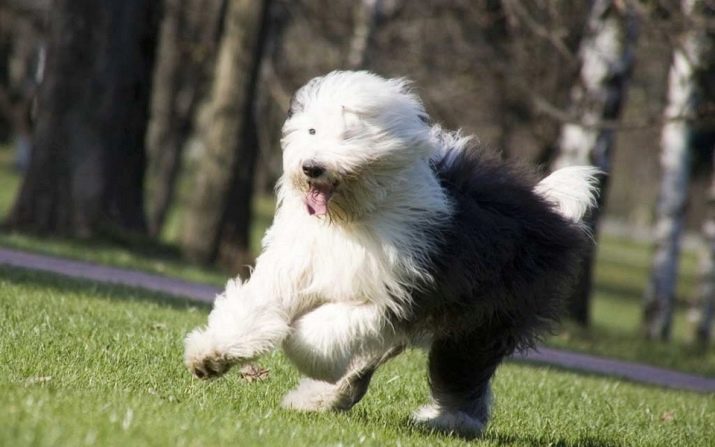
Bobtails require a lot of patience on the part of the owner. You need to act kindly during training, but firmly enough... The dog must get used to the fact that the commands given by the owner are mandatory. Thanks to their high intelligence, representatives of this breed are able to learn a lot of tricks. But you should always start with a basic training course, which allows you to teach the dog to stop on command, not approach potentially dangerous objects, and move alongside.
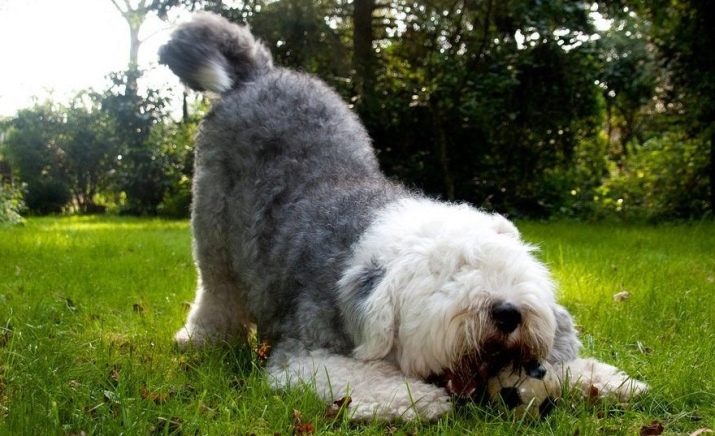
The puppy must learn the command "no" at home, while he is deprived of free range. In addition, he must know his place, the "fu" command, understand the requirements "sit", "lie down". It is better to teach the leash at home, before the first walk, then the puppy will not experience significant discomfort. In no case should you exert pressure, severity in relation to the dog during the training period. Then the learning outcomes will not be long in coming.
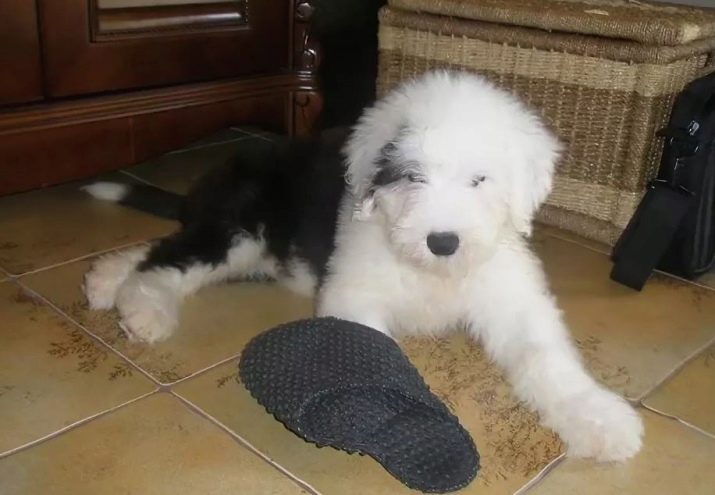
Bobtails lend themselves well to training and may well be used as guard and guard dogs. Thanks to its herding roots, the breed has an incredibly valuable talent - the ability to act independently, to show initiative. Having mastered the course of training, the animal is able to cope with the protection of the house, the owner, but remains non-aggressive towards people in general.
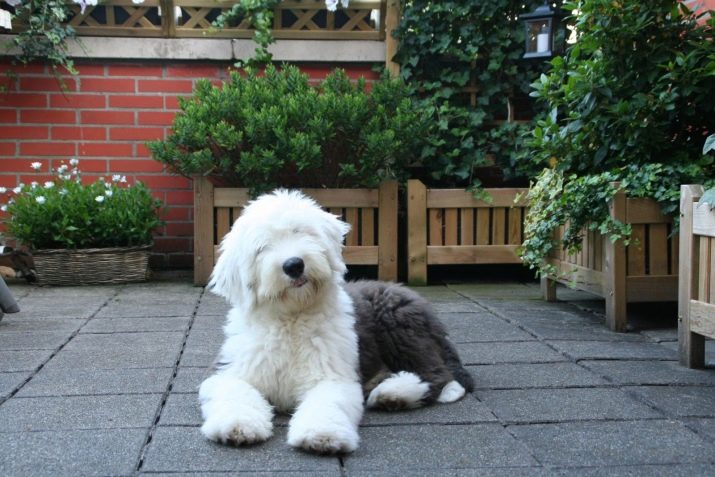
Show dog training
Bobtails on display at exhibitions must learn a number of special skills. The dog will have to master a special mode of movement - a measured move in a circle, back and forth or along a triangular trajectory, which allows demonstrating the animal's stats in dynamics. The leash should hang freely during movement. The body of the dog moves parallel to the course of the human leg. Another important point - taking the correct posture in a static position.
The bobtail should freeze with his head raised and parallel to the front paws. for 1-2 minutes... Also, the pet will have to master the process of demonstrating teeth at the request of the judges.
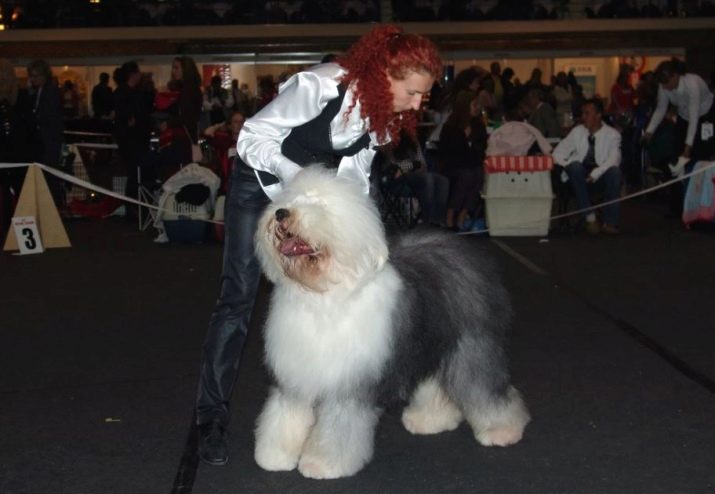
See below for more details.






































